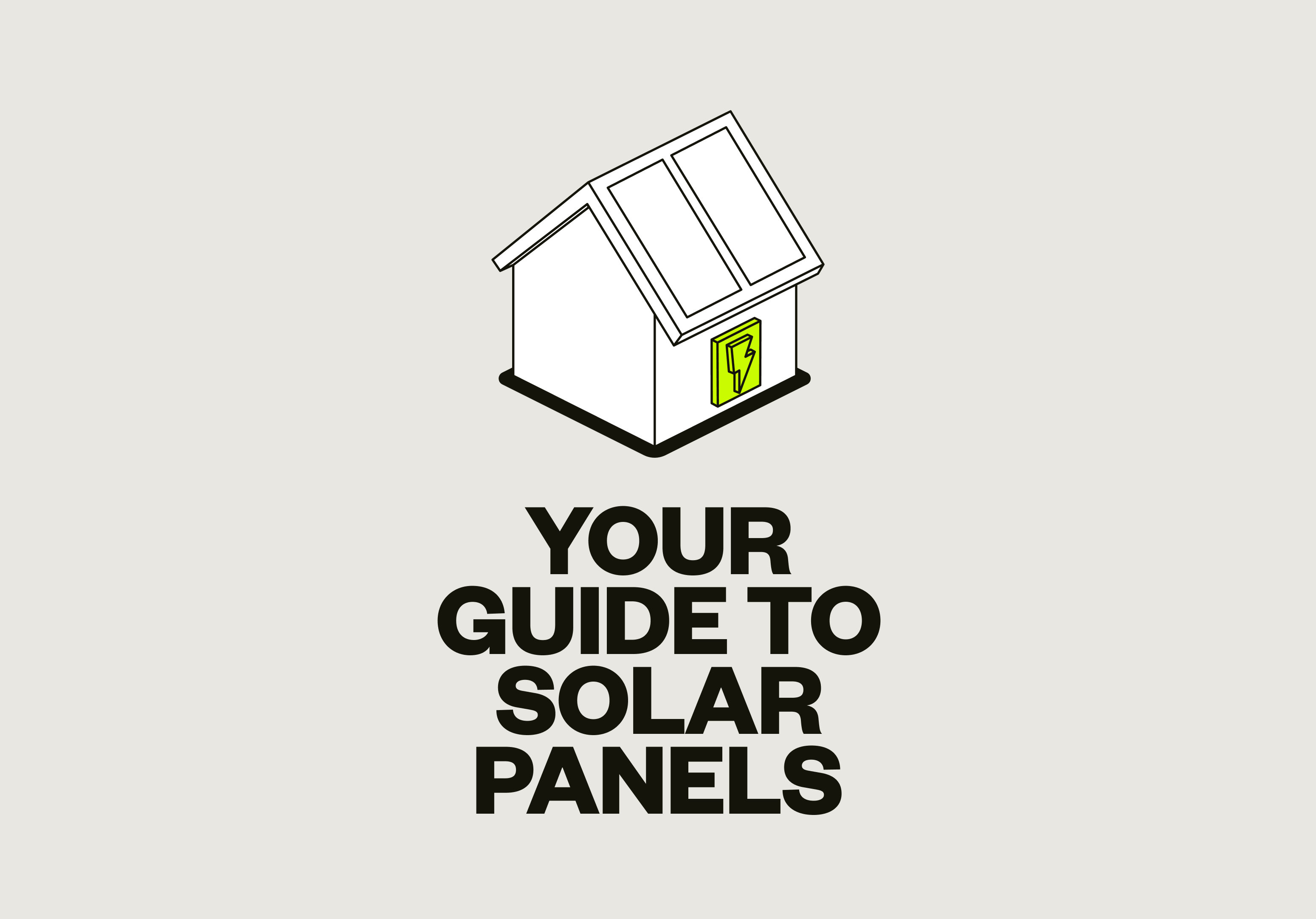June 2024
How do solar batteries work & store energy?
We’ll provide you with all the information you need to understand what a solar battery is and how suitable it is for your needs.

While solar panels are undoubtedly a great solution to reducing your energy costs and carbon footprint, a solar battery can be a massive upgrade to your solar installation, reducing your energy bills and carbon footprint even further. But what is a solar battery, how do solar battery systems work, and what else do you need to know about these energy storage solutions?
We’ll provide you with all the information you need to understand what a solar battery is, how suitable it is for your needs, and whether solar energy is worth it in the UK. For a limited time, if you choose a solar and battery package you’ll receive a free 5 kWh battery free. Only while stocks last!
What is a solar battery?
A solar battery is any technology that can store excess solar energy captured by your solar panels. This energy can then be used at a time when the sun isn’t shining – at night or on an overcast day, for instance. Exactly how this energy is stored in a solar battery depends on the type of battery that you use for your solar installation. While the most commonly available solar batteries store this energy as electricity, solar energy can be stored in different forms, including heat.
How does solar battery storage work in a solar installation?
Before we get into the differences between these solar battery technologies and how they store energy as electricity, it’s essential to have a general idea of how a solar battery works in a solar installation.
Firstly, sunlight that hits your solar panels is converted to DC electricity. What happens next will depend on whether you have an AC- or DC-coupled battery system.
If you have an AC-coupled battery system, the DC electricity flows from the solar panels to your inverter, where it’s converted to AC electricity. This electricity can then be sent to any devices that require electricity, or to a battery inverter that converts it back into DC electricity for storage. If you require energy from the battery later, the stored DC electricity can again be converted into AC electricity.
In a DC-coupled battery system, however, DC electricity flows from the solar panels directly into your battery. If you require energy at any point, it is then drawn from the battery into the inverter, where it’s converted into AC electricity for use.
Types of battery storage technologies
Now that you have a basic understanding of how solar storage works in a solar installation, it’s time to take a look at the different types of battery storage technologies.
Many types of battery technologies can be used in combination with solar panels to store the energy you capture from the sun. However, not all of these are commercially popular or available options.
For example, flow batteries are non-toxic but very expensive and have low storage capacity. Nickel-cadmium batteries are another kind; they have a long lifespan and high discharge rate but are highly toxic and are either banned or only used in large-scale commercial projects.
If you’re interested in a battery backup solution for your solar installation, there are two technologies that you could use, each with its advantages and disadvantages.
1. Lead-acid battery
The lead-acid battery was invented in the mid-19th century, making it the first rechargeable battery. Today, the two main types of lead-acid batteries are flooded and sealed. A flooded lead-acid battery can be maintained to ensure optimum performance, while a sealed lead-acid battery can’t.
Both of these types of lead-acid batteries can have deep cycle variants that allow for greater depth of discharge (DoD). DoD refers to the amount of energy you can use from a fully charged battery without negatively affecting its lifespan.
The pros of lead-acid batteries in a solar installation
The main advantage of lead-acid batteries is their cost, as they’re much more affordable than lithium-ion batteries. They also offer reliable performance when properly set up and maintained.
2. Lithium-Ion battery
Lithium-ion batteries first entered commercial use in 1991 and were groundbreaking at the time as they offered high energy density and long life, especially when compared to the size and weight of other batteries. Like lead-acid batteries, there are different types of lithium-ion batteries with different chemical compositions that offer distinct advantages and disadvantages.
For example, a lithium-ion battery with NMC chemistry consists mainly of nickel, manganese, and cobalt. In contrast, a lithium-ion battery with LFP chemistry consists primarily of lithium, iron, and phosphate.
The pros of lithium-ion batteries in a solar installation
When you use lithium-ion batteries, you’re using a battery solution that offers a higher DoD, higher energy density, longer lifespan, faster charging, and lower self-discharge compared to lead-acid batteries.
Benefits of solar battery storage
Regardless of which type of battery you choose for your solar installation, there are many benefits of using solar panel battery storage. When you have a battery backup, you can:
1. Lower your electricity bill by storing excess solar energy
Adding a battery backup to your solar system allows you to capture and store excess energy for later use. This means you don’t have to rely on energy from the grid, thereby reducing your electricity bill.
And if you’re unable to fully charge your battery using your solar panels or your battery runs low, you can charge it using the grid at off-peak periods, once again reducing your energy costs.
2. Use solar energy even when the sun goes down
One advantage of solar energy is that, by capturing and storing it in a battery, you can use it as a renewable power source at night or on days when your solar panels don’t produce enough energy on their own.
3. Ensure your energy security
By adding a battery to your solar system, you can protect yourself against power outages. Depending on the size of your battery storage, a solar battery can store enough power to meet your needs for hours or even days.
4. Reduce your carbon footprint
While the government is taking steps to reduce its reliance on fossil fuels, you can help lower your carbon footprint by producing and storing your own solar energy.
5. Enhance the value of your property
A complete solar installation with solar panels and a backup battery can also improve the appeal and value of your property. Whether it’s as a backup solution in an area that may be prone to power outages or as a way to produce clean energy, these two advantages can positively impact your property’s price.
Read more on solar panels:
- How much energy do solar panels produce
- How many solar panels do you need
- How long do solar panels last
Get the most out of renewable solar power with So Energy
If you want to know more about solar batteries and solar power, our amazing team are on hand to assist you by providing the perfect solution to meet your needs. Contact us today to learn more about our solar packages. Remember, choose a solar and battery package and receive a free 5 kWh battery from us. Only while stocks last!
FAQs
How does a solar battery charge?
In most solar installations, a solar battery is charged by solar panels that convert solar energy into electricity. This energy is stored as DC electricity in a solar battery for use as DC or AC electricity later.
How long does a fully charged solar battery last?
There are different ways to answer this question.
If you’re curious to know how long a fully charged battery will hold its charge, or what its self-discharge rate is, that will vary depending on the type of battery that you use. When not in use, lead-acid batteries can lose 4% to 8% of their stored energy every month. Lithium-ion batteries typically have a self-discharge rate of less than 2% per month, sometimes going as low as 0.5%.
If you’re interested in how long a battery will last before you have to replace it, the overall lifespan of a solar battery varies depending on the type of battery that you use. The lifespan for a lead-acid battery can be anywhere between 6 months and 5 years, depending on usage and maintenance. A lithium-ion battery can last between 2 and 15 years, depending on usage.
Lastly, the length of time a solar battery will last when in use will depend on its total capacity and the amount of power it draws.
What size battery do I need?
The size of the battery you need will depend on what your goals are with your solar installation. For example, someone who wants to go completely off-grid will need a larger battery than someone who wants a battery to store enough electricity for the occasional cloudy day when your solar panels produce less electricity (unlike the solar myth that states they won’t produce any power) or power outage.
Another major factor will be your overall energy consumption. To put this into perspective, an average one-person household will have very different energy usage than an average four-person household.
You’ll also need to consider the type of batteries you’re using, as lead-acid batteries have a much lower depth of discharge than lithium-ion batteries.
Our team will be able to tailor a package for you that meets your requirements for your home.
What happens to a solar system when the battery is full?
What happens when solar batteries are full depends on whether your installation is off-grid or grid-tied.
If you’re off-grid, the solar panels will lower their energy production as necessary to prevent your battery from being overcharged. Any electricity that is not used or stored is therefore wasted.
If your solar system is connected to the grid, has the right type of meter, and you’re part of a feed-in program, you can feed your excess electricity into the grid and receive a credit for each kilowatt hour produced.
This is supported by two feed-in programs in the UK: FIT and SEG. All solar installations from March 2019 onwards will be on the SEG program. The FIT program is only applicable to those who completed their solar installations and signed up for FIT before March 2019.
Are there any drawbacks to storing solar energy in batteries?
There are some disadvantages to adding batteries to your solar installation, primarily focused on cost. When considering whether or not you should add a backup battery to your solar system, you’ll need to factor in the cost of:
- Purchasing lead-acid or lithium-ion batteries
- The installation of your battery backup
- The maintenance or replacement of your backup battery







.webp)